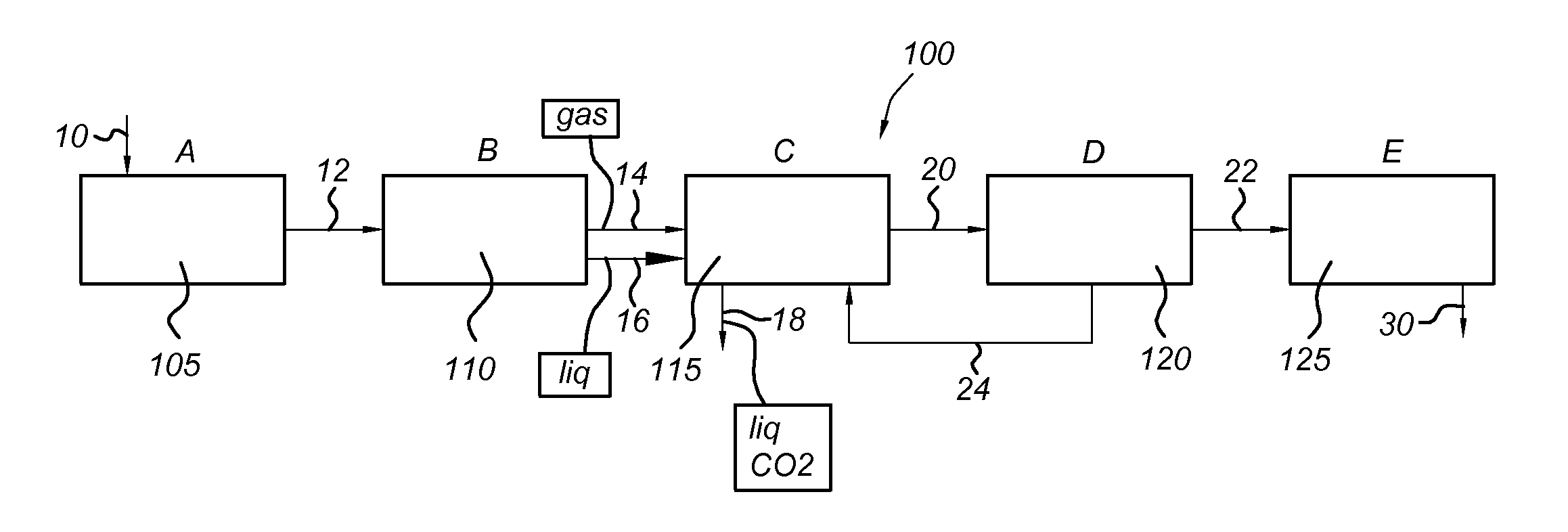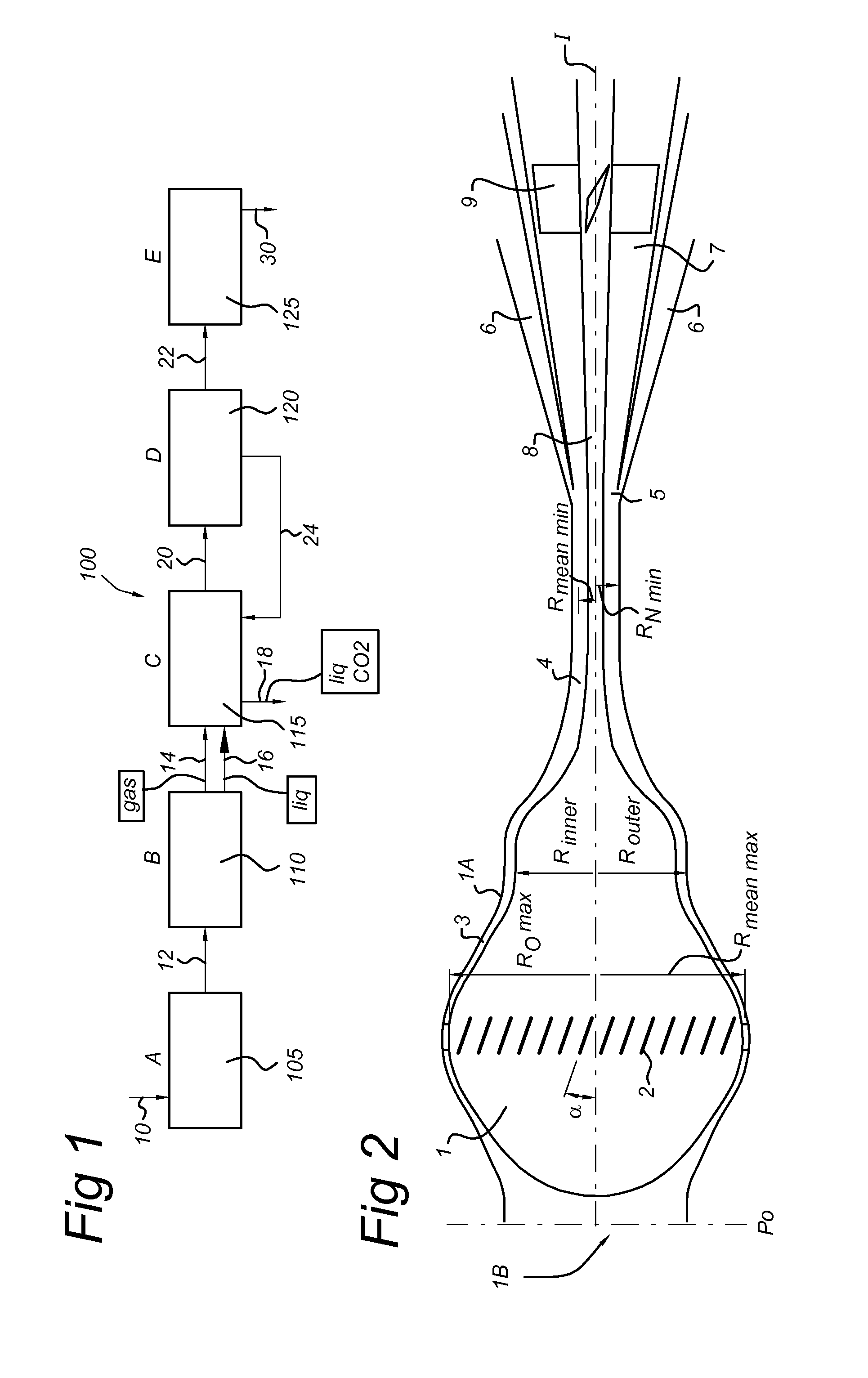Refining system and method for refining a feed gas stream
a technology of feed gas and refining system, which is applied in the direction of gaseous fuels, lighting and heating apparatus, separation processes, etc., can solve the problems of large co2 volume, large loss of heavier hydrocarbons, and reduced efficiency
- Summary
- Abstract
- Description
- Claims
- Application Information
AI Technical Summary
Benefits of technology
Problems solved by technology
Method used
Image
Examples
Embodiment Construction
[0030]In practice, gas field conditions can vary with respect to the CO2 concentration in the feed gas stream, the available feed pressure and required export pressure, the required export concentration of CO2 in the export gas stream after refining (i.e. so-called “sales gas”) and the required hydrocarbon recovery from the produced CO2 liquid. Each gas field development will therefore require a tailored process design. However, the generic process (block) scheme as presented in this invention will be similar for all field conditions.
[0031]FIG. 1 shows a processing scheme 100 according to the present invention.
[0032]The processing scheme comprises a number of processing stages or blocks 105, 110, 115, 120, 125 that process / refine a feed gas stream 10 into an export gas stream 30.
[0033]A refining system according to the processing scheme 100 comprises a first processing block 105 for dehydrating the gas stream, a second processing block 110 for pre-cooling the gas stream, a third pro...
PUM
| Property | Measurement | Unit |
|---|---|---|
| water dew point | aaaaa | aaaaa |
| water dew point | aaaaa | aaaaa |
| pressure | aaaaa | aaaaa |
Abstract
Description
Claims
Application Information
 Login to View More
Login to View More - R&D
- Intellectual Property
- Life Sciences
- Materials
- Tech Scout
- Unparalleled Data Quality
- Higher Quality Content
- 60% Fewer Hallucinations
Browse by: Latest US Patents, China's latest patents, Technical Efficacy Thesaurus, Application Domain, Technology Topic, Popular Technical Reports.
© 2025 PatSnap. All rights reserved.Legal|Privacy policy|Modern Slavery Act Transparency Statement|Sitemap|About US| Contact US: help@patsnap.com



